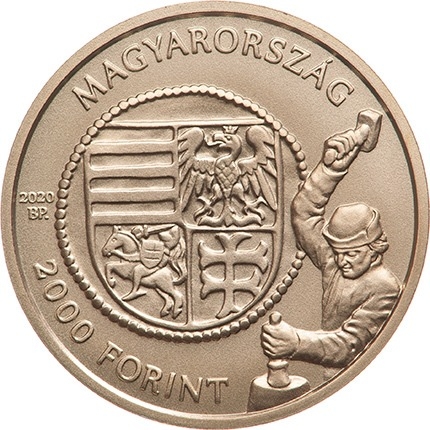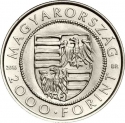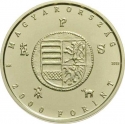You are about to finish your registration. Please check your mailbox (including spam folder). There should be a letter with a confirmation link. Check setting to make sure that your e-mail address is correct.
Send letter againDescription
The Hungarian National Bank issues a gold commemorative coin "Gold Florin of Władysław III" as the sixth piece in the Medieval Hungarian gold forints series.
Władysław III of Poland (1424-1444), known in Hungary as I. Ulászló, was the King of Hungary from 1440 until his death. He was the son of Władysław II Jagiełło, King of Poland, and Queen Sophia of Halshany. Following King Albert's death, a power struggle ensued in Hungary. On January 1, 1440, the Buda Diet elected Ulászló as King. After negotiations, he agreed to conditions for his coronation, including defending Hungary against the Turks and marrying Queen Elizabeth of Luxembourg. However, with the birth of Albert's posthumous son, Ladislaus, the legal situation shifted.
Queen Elizabeth crowned her son Ladislaus as king on May 15, 1440. Ulászló's supporters declared this coronation invalid and crowned Ulászló on July 17, 1440. In the fall of 1443, Ulászló and John Hunyadi led a successful campaign against the Ottomans, known as the Long Campaign. However, at the Battle of Varna on November 10, 1444, Ulászló was killed, marking a significant defeat for the Hungarian forces. His body was never found; Turkish chronicles claim his head was displayed, while other sources suggest he survived the battle but succumbed to his wounds later.
Engraver: Zoltán Tóth
Obverse

|
Depicts the reverse of King Władysław III's Gold Florin, showcasing an enlarged figure of Ladislaus I (Saint Ladislas) holding his battle-axe and orb with a halo above his crowned head with the Latin inscription "Sanctus Ladislaus Rex" (Saint Ladislaus the King), surrounded by the name of the king and the inscription "GOLD FLORIN" above, the dates of his reign below, separated on the right by the engraver's privy mark and on the left by a dot. I. ULÁSZLÓ ARANYFORINTJA |
|---|---|
Reverse

|
Depicts the obverse of King Władysław III's Gold Florin with a four-part coat of arms shield, bordered by an irregular row of pearls typical of medieval mints. This design, a hallmark of gold forints since Sigismund's reign, combines the family and Hungarian kingdom arms (Hungarian stripes and double cross). Władysław III's coins are distinct from his predecessors' by including the Polish eagle and Lithuanian knight from the family coat of arms. MAGYARORSZÁG |
| Edge |
2000 Forint
Gold Florins of Medieval Hungary
Gold Florin of Władysław III
Subscribe series
Adamo# EM389
Gold Florins of Medieval Hungary
Gold Florin of Władysław III
Characteristics
| Type | Commemorative Issue (Circulating) |
| Material | Nickel Brass |
| Weight | 2.7 g |
| Diameter | 20 mm |
| Thickness | - |
| Shape |
|
| Alignment | Medal |
| Mint |
Budapest Mint (BP)
|
Related coins
Gold Florins of Medieval Hungary
Gold Florins of Medieval Hungary







